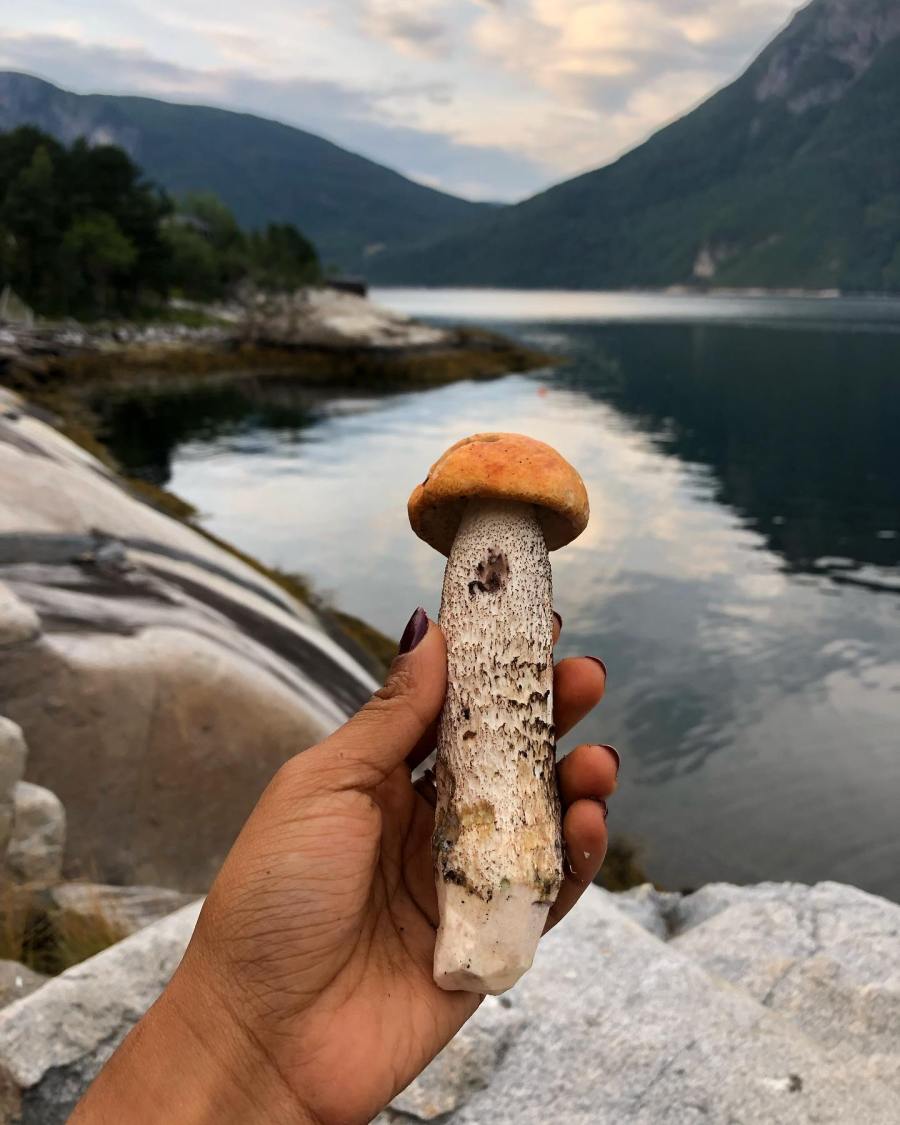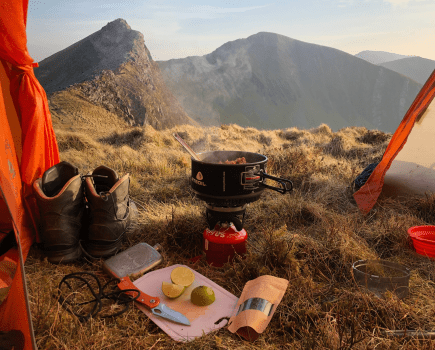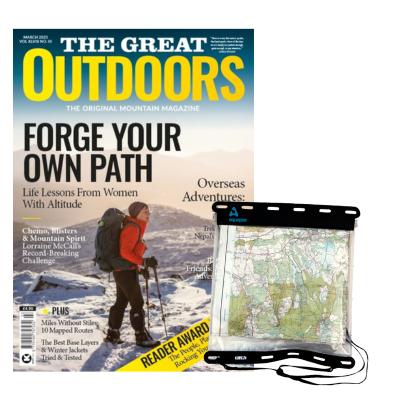My relationship with ethical foraging is personal: it’s a way to practice gratitude and slow down, connecting with my heritage and ancestry and rooting to the land that I live on. Here are some tips I’ve collected which will enable you to forage in harmony with nature.
When I teach people how to identify mushrooms and forage, I explain how I spent more than a year learning about mushrooms before I ever actually picked any to consume. For me, ethical foraging is about cultivating a deep respect for nature and fungi. It’s about moving with intention and practising being with the natural world without defaulting to what can be taken. In cultures like the UK and other parts of Europe where humans have long, violent histories of colonisation – both of lands and of their peoples – we too often slip into the habit of seeing the natural world as something for us, or worse, as an infinite resource to extract from. This capitalist framing has contributed to the multiple crises humankind is living through today, including genocides and climate catastrophe.
Main image: A brown birch bolete foraged while camping in Norway | Credit: Maymana Arefin @ Fungi Futures
How to get started with ethical foraging
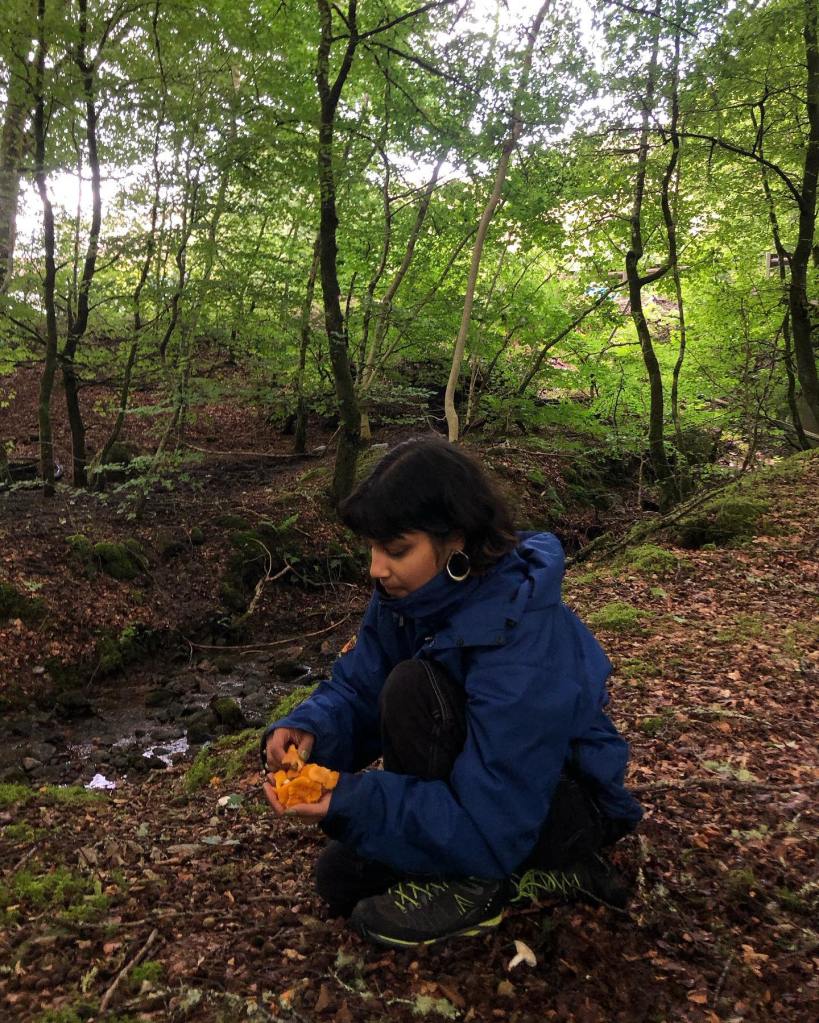
Maymana foraging for golden chanterelles. Credit: Maymana Arefin @ Fungi Futures
Three top tips to get started
1. Don’t overpick
Pick with intention and only take what you need. Excessive foraging of mushrooms and taking more than needed impacts their habitats. Truthfully, fungi are only just starting to be recognised for their crucial roles in keeping ecosystems alive. So, taking every mushroom you see in a particular area will, without a doubt, have an effect on the balances of that ecosystem.
But more than that, it’s good practice to retrain ourselves away from a tendency to ‘take-take-take’. Never take more than half of the mushrooms in an area. Always leave more behind than you pick.
2. Avoid picking young mushrooms
To understand why we shouldn’t pick young mushrooms, we first need to understand how mushrooms reproduce. A mushroom is a fruiting body that contains spores, which are much like the seeds of a fruit. But a mushroom doesn’t actually produce its spores until it has fully matured. When a mushroom is nearing the end of its life, it releases spores to produce the next generation of mushrooms. Most spores spread via wind, however not all land in a suitable environment to grow into new mushrooms – usually only a small proportion of them succeed.
This means that a mushroom picked very young may not have even produced spores yet, let alone had a chance to release them. This is why it’s much better to focus on picking more mature mushrooms – in good condition – which have already had a chance to spread their spores.
Whilst picking young mushrooms may not affect that patch’s ability to come back next year with more mushrooms, it does stop spores from spreading to create new patches. As fungal diversity is decreasing worldwide, we need to be mindful about future harvests and pick in a way that allows their populations to recover from our impact.
3. Tread lightly and leave no trace
Mind your step and follow the principles of Leave No Trace. Don’t trample patches of undergrowth, plants or small creatures that might be nesting or sheltering on the forest floor. Take litter with you. If someone else walked through an area that you picked from, they should not be able to tell that you were there!
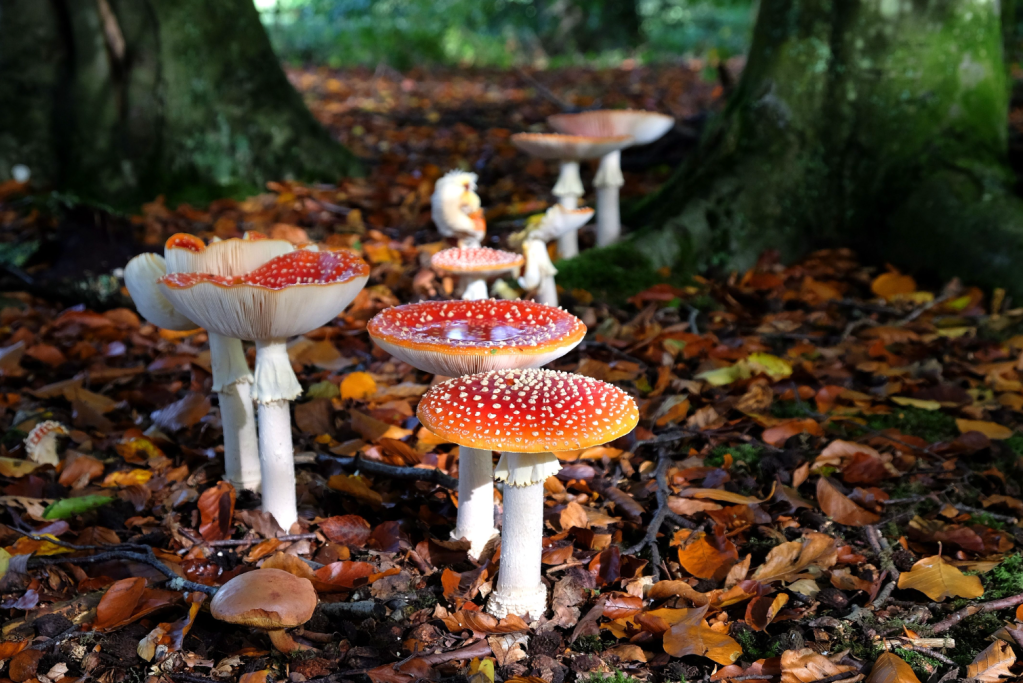
While Fly agaric is poisonous reports of human deaths are rare. Credit: Shutterstock
Where to start with mushroom identification
There are roughly 15,000 types of wild fungi in the UK. When you first start learning how to identify mushrooms, it can be daunting! Fungi take so many different shapes, colours and forms…
Most mushrooms change as they mature, at different stages of their life cycle. You could see the same mushroom when it was young versus older and be thrown by how different it looks! But don’t let this put you off. It’s also really rewarding learning the ways of the forest and how to recognise their many tricks and guises.
Do have an awareness of risk and exercise a healthy amount of caution when identifying mushrooms. Just as some plants are highly poisonous, some mushrooms are toxic too, and they can be lethal. Don’t worry – looking at a poisonous mushroom won’t harm you or being near it! Poisonings usually happen from misidentification and ingestion.
This is why I recommend going on mushroom forays with people who are knowledgeable so that they can show you the ropes. It’s also worth purchasing a reputable ID book to help you familiarise yourself with the fungi you meet. Get one that has lots of photos and illustrations and provides lots of detail on how to identify each mushroom.
Be aware that as mushroom foraging has increased in popularity some guides are generated by AI and have highly inaccurate information! This is unfortunately true of some mushroom identification apps, too, which still make mistakes. You don’t need to fork out a lot of money for a good guidebook and can buy them second-hand.
What about ethical foraging of edible fungi?
As many mushrooms look extremely similar to each other, practise identifying mushrooms from multiple characteristics, especially if you’re looking for edible ones.
For example, instead of noting that it’s a ‘white mushroom’, learn to be more specific: what colour is its cap, stem or gills? What pattern do the gills grow in or how does its stem attach? Note what kind of habitat you find this mushroom: Does it always grow on deadwood or from the forest floor? Engage your senses: Does it have a particular smell? Does the stem stain a certain colour when bruised?
Asking yourself lots of specific questions and having multiple characteristics to check a mushroom’s ID is essential in identification.
Likewise, never rely on a single source (whether a book, website, app or person) for identification.
Five beginner-friendly edible mushrooms
Even if they don’t have poisonous look-a-likes, please be meticulous in your identification efforts. Compare your finds with my photos carefully, check for multiple characteristics, and research how to prepare them.
Here are some of my favourite, beginner-friendly recommendations for mushrooms that I’ve foraged in the UK.
- Scarlet elfcup. Credit: Maymana Arefin @ Fungi Futures
- Grey oyster. Credit: Maymana Arefin @ Fungi Futures
- Wood ear. Credit: Maymana Arefin @ Fungi Futures
- Beefsteak polypore. Credit: Maymana Arefin @ Fungi Futures
- Dryad’s saddle. Credit: Maymana Arefin @ Fungi Futures
- Scarlet Elfcup
- Grey Oyster
- Jelly Ear
- Beefsteak Polypore
- Dryad’s Saddle
All of the listed mushrooms should be thoroughly cooked before consuming.
There is a saying in foraging circles: “Never munch on a hunch!” Unless you are 100% confident about an identification, do not eat it.
This skills article about ethical foraging was originally published in the November 2024 issue of The Great Outdoors.

